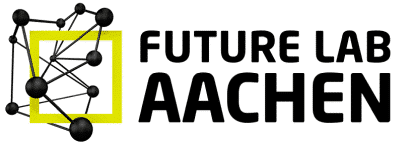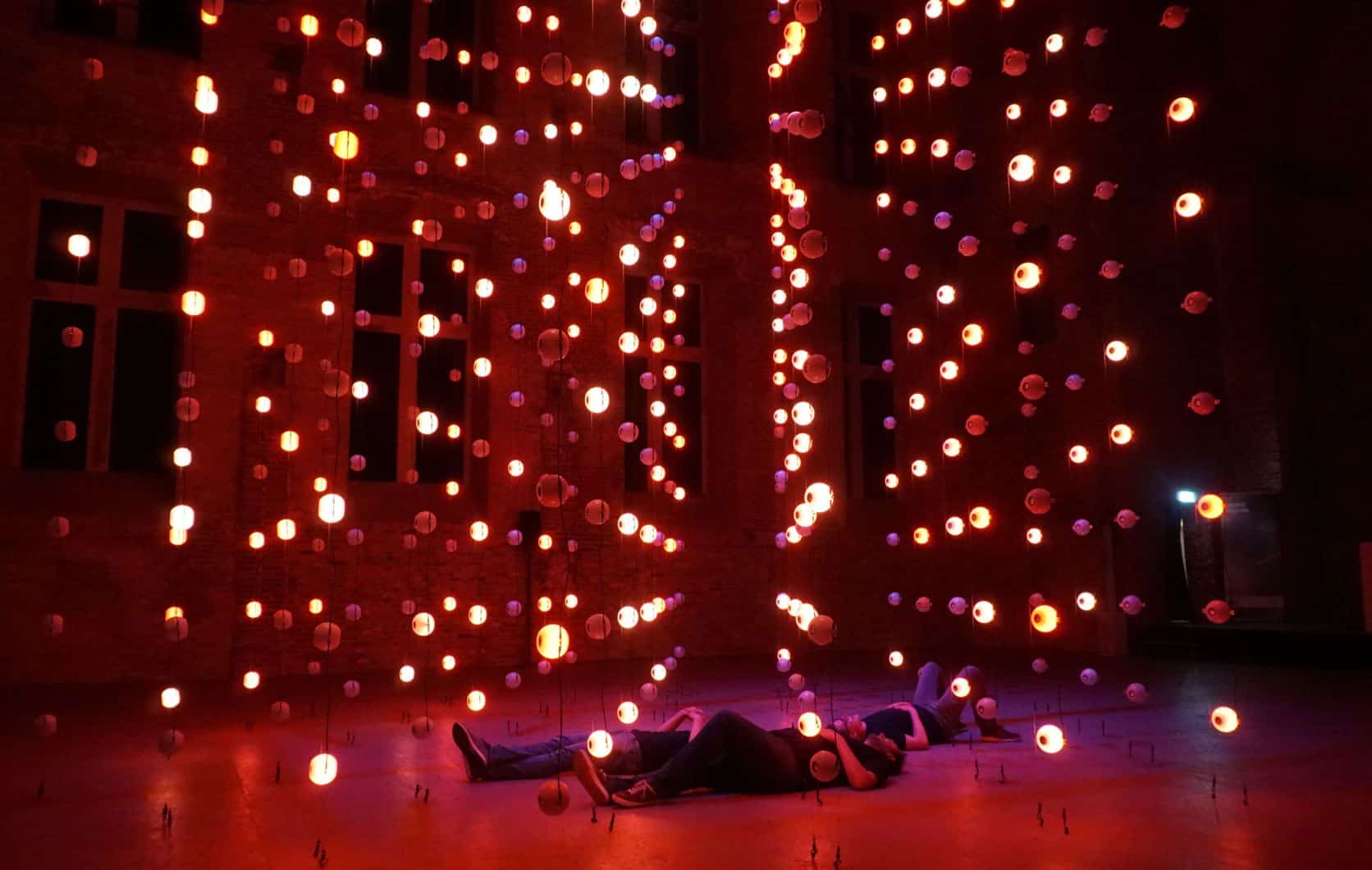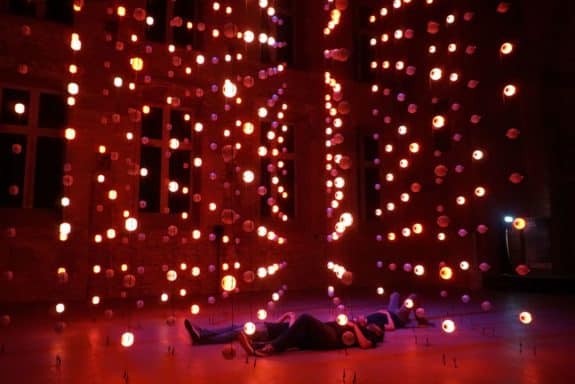How enriching for human perception the collaboration of art and science can be is demonstrated by Tim Otto Roth’s light-and-sound sculpture, which, after sensational presentations in Berlin and Munich, will soon be on show in Aachen, too. And rightly so! After all, the installation was created with the help of RWTH research physicists.
The walk-in, light-and-sound installation AIS3 [aiskju:b] consists of 444 spherical, illuminated speakers that render the invisible behaviour of cosmic neutrinos accessible to human eyes and ears. It was created by conceptual artist and composer Tim Otto Roth, born 1974 in Oppenau/Schwarzwald, whose works constantly find new ways to bring art and science together. With his AIS3 project, he had the support of some prominent Aachen scientists. Prof. Christopher Wiebusch and a project team at the RWTH’s 3rd Institute of Physics B helped him with observation data from the IceCube Neutrino Observatory, which is located two kilometres deep beneath the ice at the South Pole.
“Sensational,” says the Physics professor
The artist has translated IceCube data on the nature and behaviour of neutrino particles into lights and sounds that, depending on their position in the space, merge into a variety of different tonal colours. Visitors can walk around freely inside the installation and enjoy a unique visual and audial insight into the astrophysical mysteries being charted inside the Antarctic observatory.
“This installation is incredible – simply sensational,” says Christopher Wiebusch, not even trying to hide his enthusiasm. “AIS3 has shown me the data that I have known about for so many years now in a completely novel form. When I first experienced it as sound and light, it left me speechless!”
And that is no mean feat! If there’s anyone who can fathom the mysteries of ‘nothing, spinning’, it’s Professor Wiebusch. Just a year ago, he was celebrated in the science world for a significant breakthrough in the field. Together with an international team of researchers he succeeded, with the help of the IceCube Neutrino Observatory, in locating a source of high-energy cosmic neutrinos and recording a neutrino eruption – a decisive step towards answering the big question: Where does cosmic radiation come from?
Ludwig Forum Aachen
Tim Otto Roth AIS³ – A sound laboratory
06.09. to 10.11.2019
Opening Thurs. 05.09.2019, 7 pm
Thursdays: admission free!
05.06.2019




